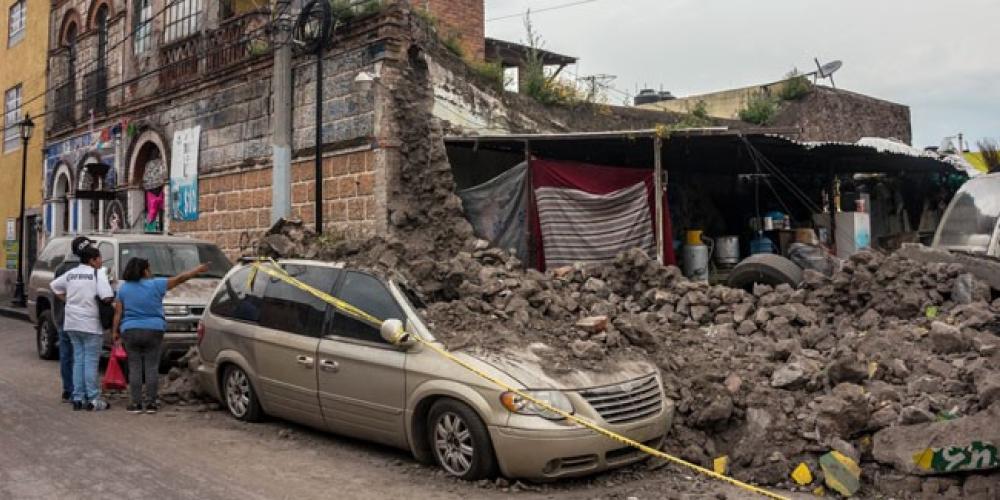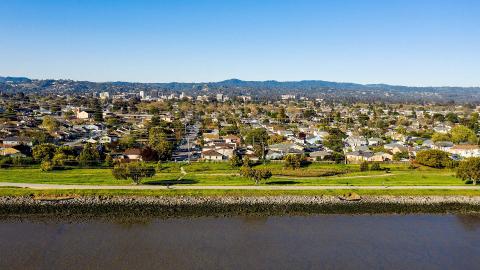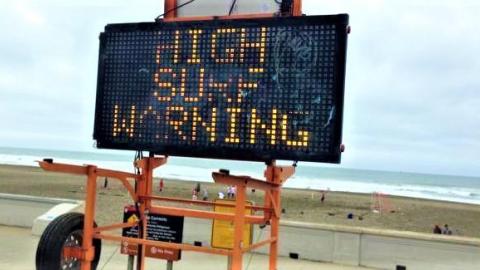
* First in an occasional series of dispatches from MTC and ABAG staff about their experiences out in the field.
On September 19, 2017, Mexico City experienced a damaging magnitude 7.1 earthquake, resulting in the deaths of 228 people and the collapse of 44 buildings. The 2017 earthquake occurred on the 35th anniversary of another deadly earthquake in the city that killed nearly 10,000 people.
Due to geological, building construction and social factors, Mexico City is highly vulnerable to earthquakes. Much of the city sits on an ancient lake bed that has been drained over the last several centuries to accommodate the city’s expansion. This geology leads to significant subsidence and loose soils, which worsens ground shaking and can cause liquefaction in earthquake events.
In addition, although Mexico’s current building codes are similar to those in the Bay Area, many existing buildings date back decades or centuries, before these codes were in place. Nearly 60 percent of residential buildings are self-built without permits or inspections, meaning they don’t comply with any codes at all. Many of these residents are also highly vulnerable due to their social status – they often lack savings, insurance, secure jobs or even legal rights to their own homes.
The earthquake was a reminder to those of us in the Bay Area about the ever-present hazards of living in our own region, and the urgent need to prepare before the next disaster strikes.
Resilient Cities: Sharing Lessons, Developing Strategies
Earlier this year, I had the privilege of traveling to Mexico City as one of six Housner Fellows, a two year career-development program for young leaders working in seismic risk reduction, sponsored by the Earthquake Engineering Research Institute (EERI). We went to see how other regions with similar seismic hazards are addressing how they mitigate, respond to and recover from earthquakes.
While there, we participated in an information-sharing workshop with Rockefeller’s 100 Resilient Cities Initiative (100RC). The 100RC initiative funds a Chief Resilience Officer position in cities worldwide and supports resilience projects through knowledge, consultant assistance and workshops. In 2014, 100RC selected three Bay Area cities – San Francisco, Berkeley and Oakland – to receive funding for Chief Resilience Officer positions.
The Mexico City workshop focused on sharing lessons for earthquake recovery by convening the Chief Resilience Officers from eight countries and nine cities, including San Francisco, with similar seismic risks. Participants worked with Mexico City’s Chief Resilience Officer to develop better strategies for recovering the city’s housing, water infrastructure and citizen response procedures.
Building ties to Mexico City and the rest of the 100RC network offers our own region a glimpse into what recovery from a major earthquake could be like. What might happen to our housing, infrastructure and residents? In what ways would earthquake recovery be the same, or different, in the Bay Area compared to Mexico City and elsewhere in the world? And, most importantly, what lessons learned can be applied before the next big earthquake hits the Bay?
ABAG’s Resilience Program: Supporting Recovery and Mitigation
ABAG’s Resilience Program has long worked with Bay Area cities to try and answer these questions, through seismic retrofit policy, local hazard mitigation plans, workshops on infrastructure resilience and assisting cities to better position themselves for disaster recovery. Recently that effort has included assisting Santa Rosa and Sonoma/Napa counties with fire recovery efforts.
Since the Resilient Cities meeting in Mexico City, the Resilience Program has worked with 100RC to expand their reach in the Bay Area. As the Resilience Program builds new partnerships globally, staff continue to apply this learning to better help the region think through our own approach to seismic resilience and disaster recovery. The opportunities provided by the Housner Fellows Program and 100RC are invaluable in helping the Bay Area prepare for inevitable disasters.
Dana Brechwald is a Resilience Planner for MTC and ABAG.



Submit your comment
In order to receive a reply to your comment, please provide an email address.